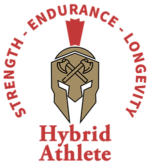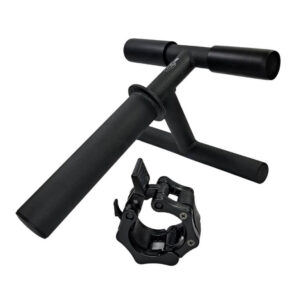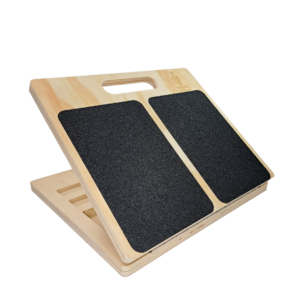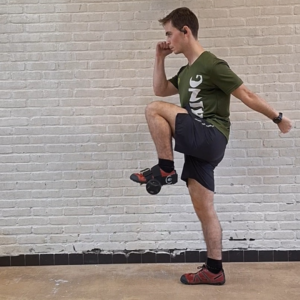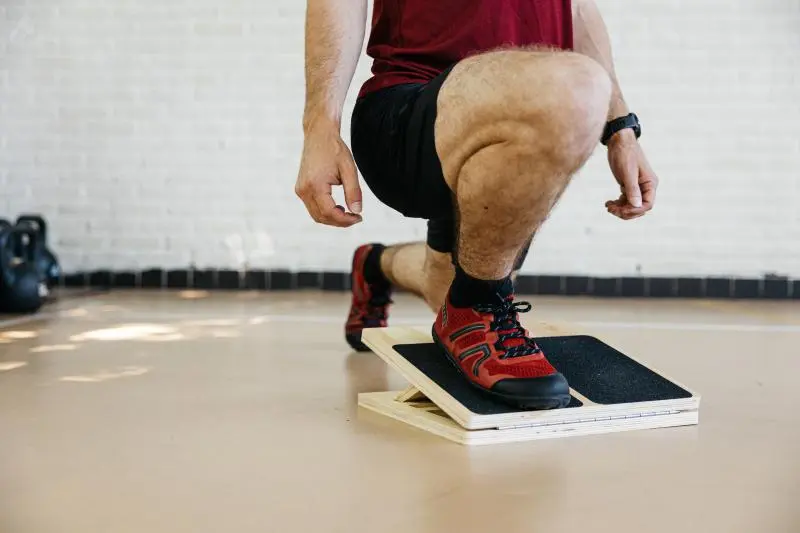
If you ever looked into exercise biomechanics, you’ve certainly stumbled upon Knees-over-toes exercises, with KOT squats as the pinnacle of this method.
After all, this exercise approach offers athletic development in different aspects – strength, mobility, hypertrophy, and much more.
As the name suggests, the goal of squatting knees-over-toes is to allow your body to reach the full range of motion during the movement. It relies on several points in the lower-body kinetic chain, but mostly on ankle mobility, knee strength, and hip mobility/flexibility.
But, KOT squats are also notorious for being hard to master. Well, today we are going to break through that myth.
Let’s see how you can get to a full pistol or ATG split squat in no time!
Table of Contents
Benefits of Knee Over Toe Squats
First off, we need to set one thing straight – KOT squats are good for your body.
The myth around your knees going over your toes in the bottom squat position being bad for you is just that – a myth. As a matter of fact, we, humans, are made to squat deep, with our knees going over the toes. This way, your joints, muscles, ligaments, and tendons split the load evenly, allowing the body to handle it with minimal stress.
Here’s a list of benefits that knee-over-toes squats bring to the table:
- You develop better balance and proprioception
- Your body (re)learns how to move in full ranges of motion
- Injury prevention, especially when it comes to ankles, knees, and hips
- Better execution of standard strength lifts
- Overall improvement with running and jumping
If you want to dive deep into KOT squats (pun very intended), check out our Knees-over-toes guide.
Now, let’s tackle the things you should do to prepare for KOT squatting…
How To Get Into KOT Squats?
Due to the difficulties that knees-over-toes squats can cause to beginners, you should consider exercises and stretches that work on similar regions.
Most people give up on KOT squats due to poor mobility and flexibility. It’s rarely a major strength issue. So, that’s what we need to tackle.
KOT squats (and other exercises) mainly utilize something we call triple flexion/extension. It basically involves the engagement of ankles, knees, and hips at the same time.
If you find yourself struggling to do some of the knees-over-toes exercises (or all of them, no shame in being a beginner), you should start with slow exercise progression and targeted stretching.
Exercise Progressions
Let’s say, for example, that you want to learn how to do a full-on pistol squat. Besides being a unilateral (one-legged) movement, you need a few factors to fully master it:
- Ankle mobility to handle to KOT range of motion
- Knee strength to successfully transfer the load further
- Hip strength and flexibility to take the load and
So, besides tackling these areas individually (check out our ankle exercise guide), you should consider finding easier movements. This way, you can progress at your own pace. For pistol squats, you can go:
- Single-leg isometric holds
- Single-leg squat to box
- Patrick step
- Full ROM pistol squat
The goal is to analyze the complex movement we want to do from the perspective of the joints involved. Once that’s done, it’s all about the buildup, aka progression. Another famous KOT squat progression is the Patrick>Poliquin>Petersen progression.
Another great example of KOT squat progression is putting your front leg on an elevated surface. Start with a higher box, and work your way to the floor level. This goes out for lunging movements as well.
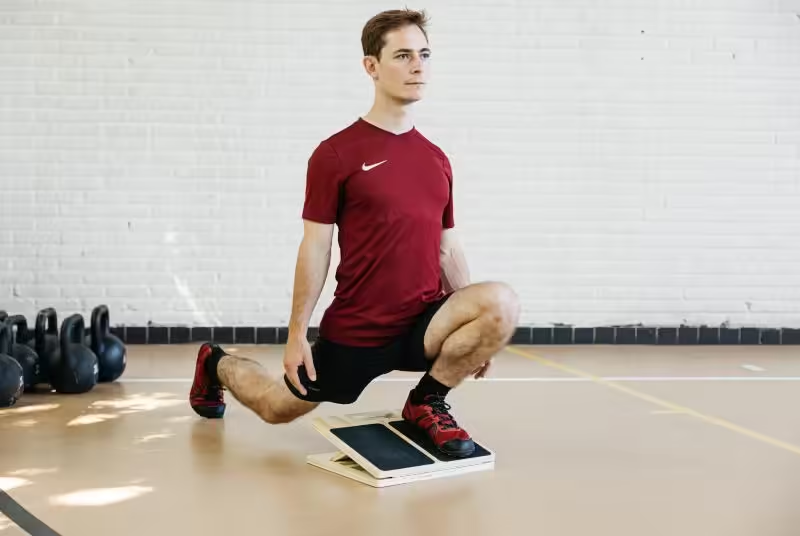
Stretching is your friend
Since triple flexion involves muscles that connect multiple joints, it’s important to work on their elongation, aka stretching.
With KOT squats, the stretching focus is on the hips, rectus femoris, and the muscles of the shin, ending with the Achilles tendon at the ankle. In most cases, a sedentary lifestyle is the main culprit when it comes to issues in these areas.
Knees-over-toes squatting heavily relies on the dorsiflexion ability of the ankle, hence the need for an elevated surface.
However, there’s another way to approach this:
Implement a Slant Board
Essentially, a slant board gives you the option to change the starting position angle of your KOT squat. This angle change affects plantar and dorsiflexion at the ankle, yes, but it also helps with setting your whole body for the movement that follows.
One of the most common uses for the slant board in service of developing KOT squats is heel elevation. If you’ve ever done heel-elevated squats, you know the drill. Heel elevation helps you get down to full ROM without putting all the load on your knees.
Similarly to using a box for KOT squat progression, you should lower the angle on your slant board as your ROM and ankle mobility improve.

Knees Over Toes is The Way of Strenght, Endurance, AND Longevity
Getting into KOT squats is a smart call. Thanks to the balanced nature of this method, you can work on strength, endurance, and injury prevention at the same time. Remember, KOT squatting is a way of returning your body’s biomechanics to default settings.
It will feel strange at the beginning, but if you keep at it with progressions and stretching, you’ll reap the knees-over-toes benefits in no time. (As long as you do NOT work through pain).
Get the best equipment to help you squat knees over toes:
GET THE BEST INJURY-PREVENTION TRAINING EQUIPMENT:
Above all, a storyteller. Then comes marketing, branding, writing music, powerlifting, and woodworking.
